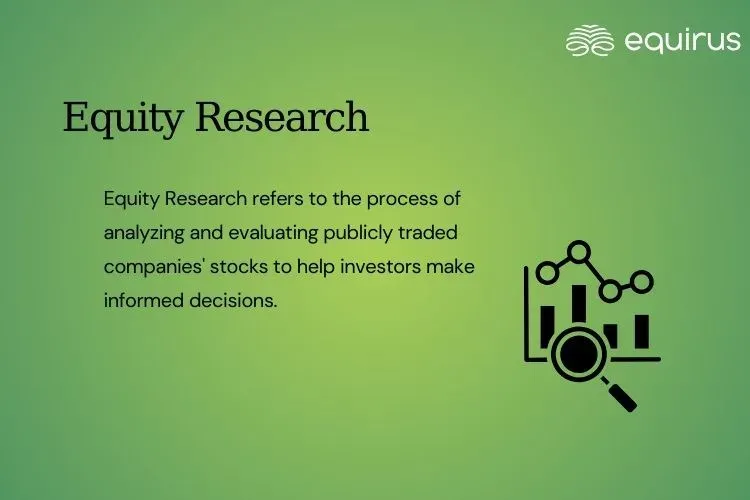Equity Research

Key Highlights
-
Equity Research refers to the process of analyzing and evaluating publicly traded companies' stocks to help investors make informed decisions.
-
Types includes sell-side research, buy-side research and independent research.
What is Equity Research?
Equity Research refers to the process of analyzing and evaluating publicly traded companies' stocks to help investors make informed decisions. It involves studying a company’s financial performance, industry trends, management quality, competitive positioning, and stock valuation.
The goal is to determine whether a stock is undervalued, overvalued, or fairly valued, and to make a recommendation such as Buy, Sell, or Hold.
Key Components of an Equity Research Report
1. Company Overview: Description of the company’s business model and operations.
2. Industry Analysis: Sector trends, competitive landscape, market growth.
3. Financial Analysis: Revenue, profit, cash flow, margins, and ratios.
4. Valuation Models: Use of techniques like Discounted Cash Flow (DCF), P/E ratios, or EV/EBITDA.
5. Investment Thesis: Analyst's view on the stock’s prospects.
6. Risks: Potential threats to business performance or valuation.
7. Recommendation: Final call: Buy, Hold, or Sell, with a target price.
Who Conducts Equity Research?
Equity research is primarily carried out by:
-
Sell-side analysts: Work for brokerage firms or investment banks and provide research to clients.
-
Buy-side analysts: Work for institutional investors like mutual funds or hedge funds to guide internal investment decisions.
-
Independent analysts: Offer unbiased research, not tied to trading activity.
Types of Equity Research
| Type | Description |
|---|---|
| Sell-Side Research | Conducted by analysts at brokerages or investment banks. Reports are shared with clients to drive trading activity. |
| Buy-Side Research | Performed by asset management firms, mutual funds, hedge funds for internal investment decisions. |
| Independent Research | Provided by firms not affiliated with trading institutions; aims to be unbiased. |
Purpose
The main goal of equity research is to assess whether a stock is undervalued, overvalued, or fairly priced. Based on this analysis, equity analysts issue recommendations such as Buy, Sell, or Hold.
Importance of Equity Research
-
Informs investors about stock potential and market risks.
-
Drives efficient markets by helping prices reflect all available information.
-
Improves transparency as companies are scrutinized regularly.
-
Supports portfolio decisions for both individuals and institutions.
Limitations of Equity Research
-
Analyst bias or conflicts of interest can affect objectivity.
-
Forecasts may be inaccurate due to unpredictable market factors.
-
Smaller companies may receive limited or no coverage.
